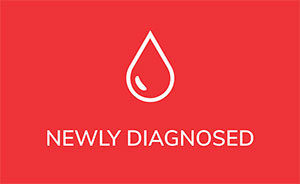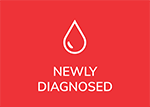Authored by Dr. Brian Koffman
Bottom Line:
The study looked at 5-year overall survival (OS) in treatment naïve CLL (chronic lymphocytic leukemia) patients who were unfit or older than 65 years old compared to an age and gender-matched general population (AGMGP) without CLL. It found that targeted therapies almost, but did not completely, eliminate the survival advantage for those without CLL.
Who Performed the Research and Where Was it Presented:
Stefano Molica, MD, and colleagues presented the results at iwCLL in 2023 (International Workshop on CLL) in Boston, MA.
Background:
Targeted therapies have revolutionized the treatment of CLL but are not considered curative. Prior studies on frontline treatment for CLL have shown that when ibrutinib was used, OS was the same as those with no CLL. This study looks at the commonly available targeted therapies to see if they improved survival for those without CLL.
Methods:
This was a meta-analysis of pooled data from which we compared the 5-year OS of those who had never before received treatment, were older than 65 years old, or who were unfit. These CLL patients were enrolled in phase 3 clinical trials of targeted agents (RESONATE2, ILLUMINATE, ALLIANCE, ELEVATE-TN, CLL14, and GLOW) to the 5-year OS of Italian and US AGMGP.
Results:
- The CLL trial analysis group had a total of 2223 patients.
- 1293 were enrolled in a targeted agent (TA) experimental arm.
- 930 were enrolled in a control chemotherapy (CT) or chemoimmunotherapy (CIT) arm.
- Among patients treated with TAs:
- 971 (75%) received continuous therapy with a first-generation Bruton Tyrosine Kinase inhibitor (BTKi)
- Ibrutinib (I) monotherapy, 32.7%, ibrutinib combined with obinutuzumab (IO), 11.6%, I combined with rituximab (IR), 18.7%, a second-generation BTKI acalabrutinib (A) monotherapy, 18.4%, or A combined with obinutuzumab (AO), 18.4%.
- 322 persons (24.9%) received fixed-duration therapy with venetoclax (V)-based combinations
- V-obinutuzumab, 22.5%
- V-ibrutinib, 10.9%
- 971 (75%) received continuous therapy with a first-generation Bruton Tyrosine Kinase inhibitor (BTKi)
- Patients enrolled in the CT/CIT arms received:
- chlorambucil (C) as a single agent, 14.3%
- Bendamustine-Rituximab (BR), 19.6%
- C-obinutuzumab (CO), 66%
- The median age of patients treated with TAs was 70 years (range 47-93).
- The OS for the control arm AGMC was 56 months.
- The OS for the CLL arms was between 53.6 months- 55 months.
- Not surprisingly, those who received CT/CIT did less well than the control arm.
Conclusions:
These results show that targeted agents have almost entirely but not fully eliminated the shorter OS of CLL patients relative to the AGMGP. This benefit is not true for those treated with chemotherapy or chemoimmunotherapy.
Links and Resources:
Watch Dr. Brian Koffman’s monologue on the abstract:
Stay strong. We are all in this together.
Brian Koffman MDCM (retired), MS Ed
Co-Founder, Executive VP, and Chief Medical Officer
CLL Society

















